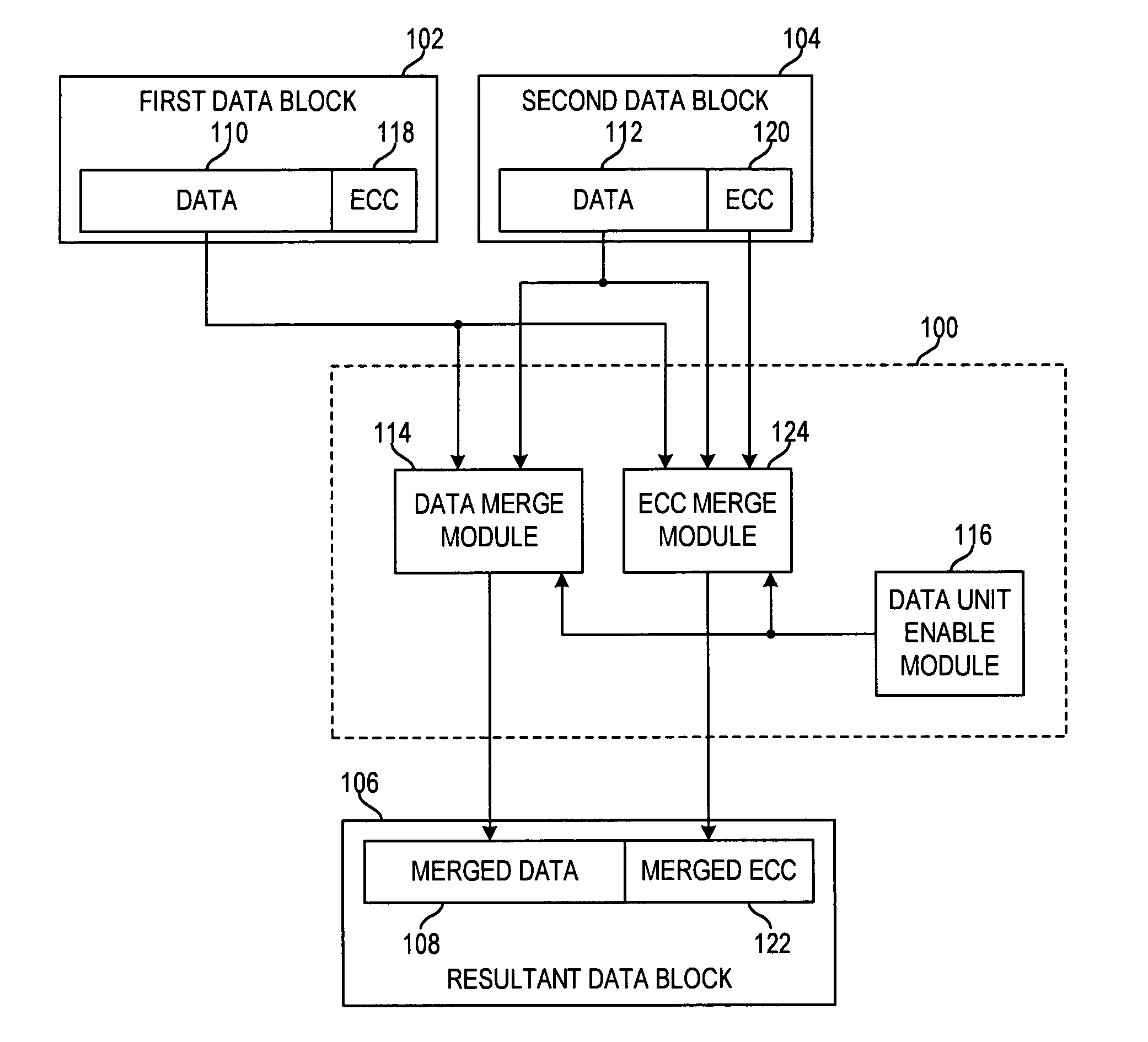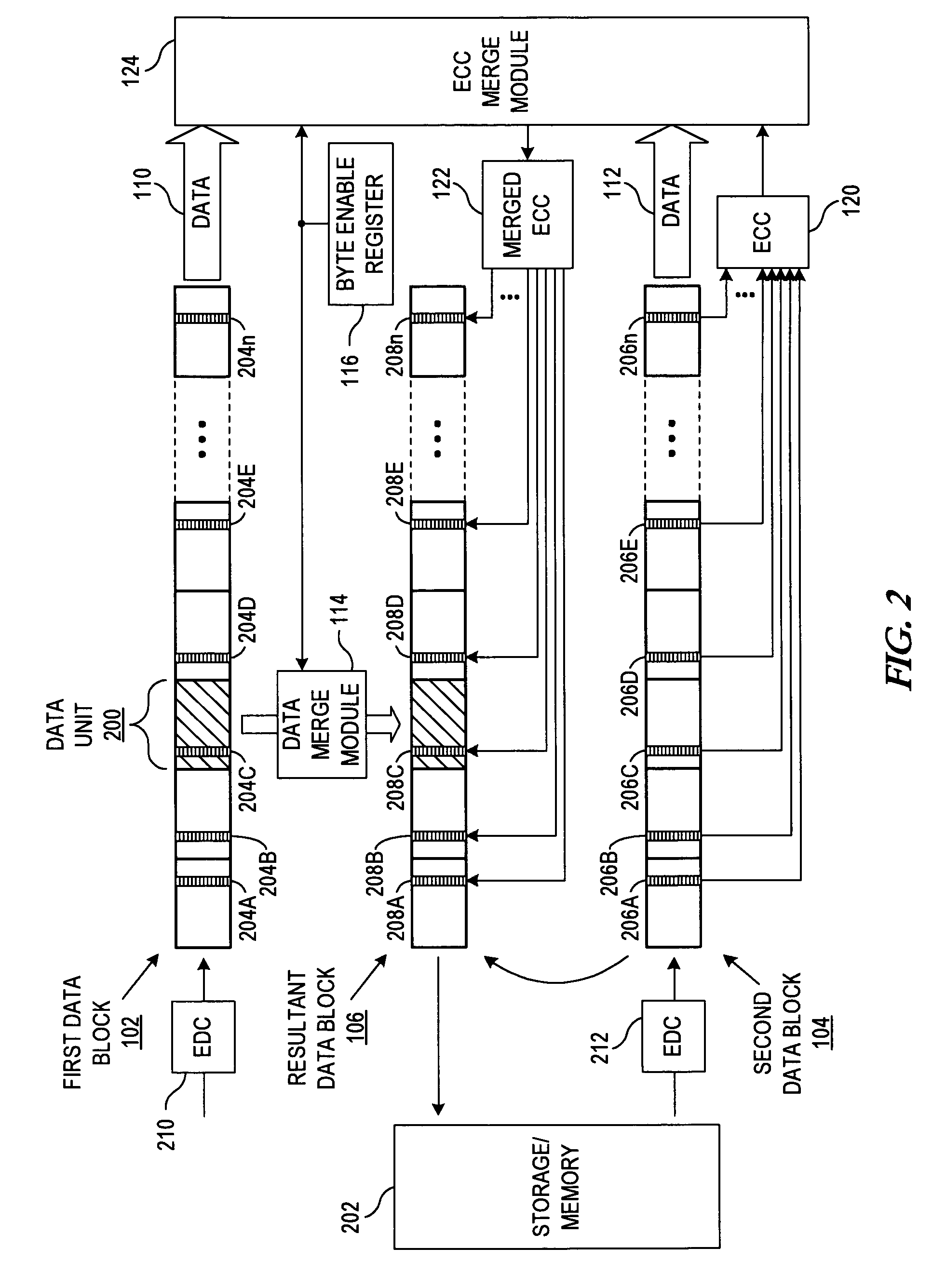Apparatus and method for merging data blocks with error correction code protection
a technology of error correction and data blocks, applied in the field of data processing, can solve problems such as data corruption, data corruption, and the price of implementation of these error detection and correction techniques
- Summary
- Abstract
- Description
- Claims
- Application Information
AI Technical Summary
Benefits of technology
Problems solved by technology
Method used
Image
Examples
Embodiment Construction
[0024]In data processing systems, it is often beneficial to selectively modify portions of a data block, rather than to update the entire data block. This is particularly beneficial where only a portion of the subject data block requires modification, and updating the entire data block is more time consuming and / or computationally intensive than updating only those portions of the data block that have changed. One manner for performing such selective modification of a data block is referred to as a “merge” function, which generally involves combining at least two sets of data in a particular fashion into one set of data. For example, data may be merged in connection with a memory write function in which only selected portions of the data block are modified.
[0025]Where the data blocks to be merged are associated with an Error Correction Code (ECC), the ECC needs to be recalculated because the resultant data has likely changed. As previously indicated, prior merging methodologies dete...
PUM
 Login to View More
Login to View More Abstract
Description
Claims
Application Information
 Login to View More
Login to View More - R&D
- Intellectual Property
- Life Sciences
- Materials
- Tech Scout
- Unparalleled Data Quality
- Higher Quality Content
- 60% Fewer Hallucinations
Browse by: Latest US Patents, China's latest patents, Technical Efficacy Thesaurus, Application Domain, Technology Topic, Popular Technical Reports.
© 2025 PatSnap. All rights reserved.Legal|Privacy policy|Modern Slavery Act Transparency Statement|Sitemap|About US| Contact US: help@patsnap.com



